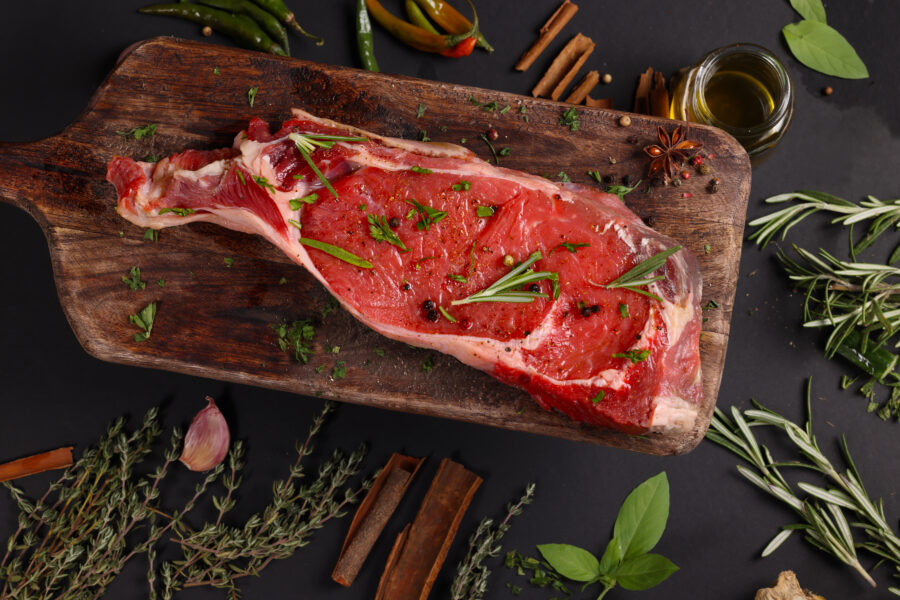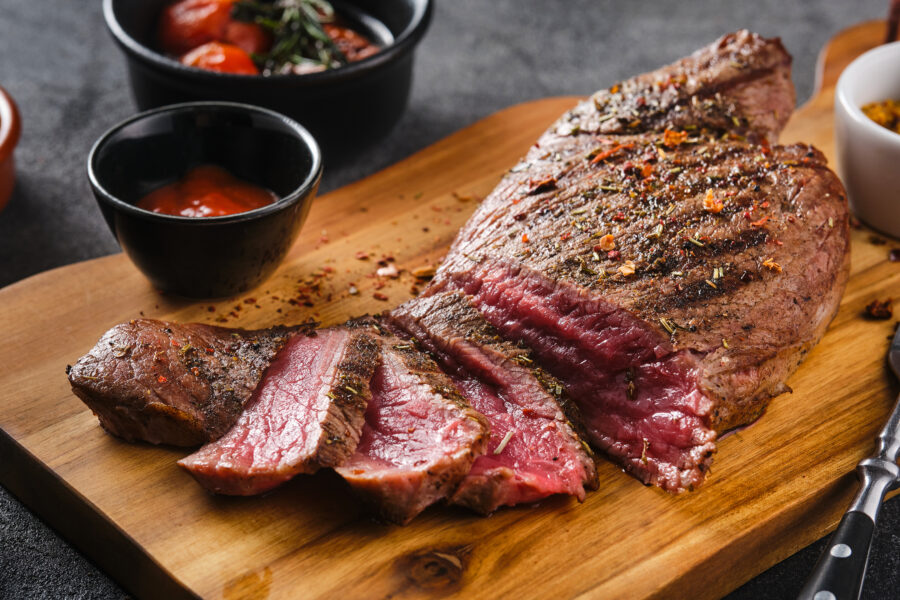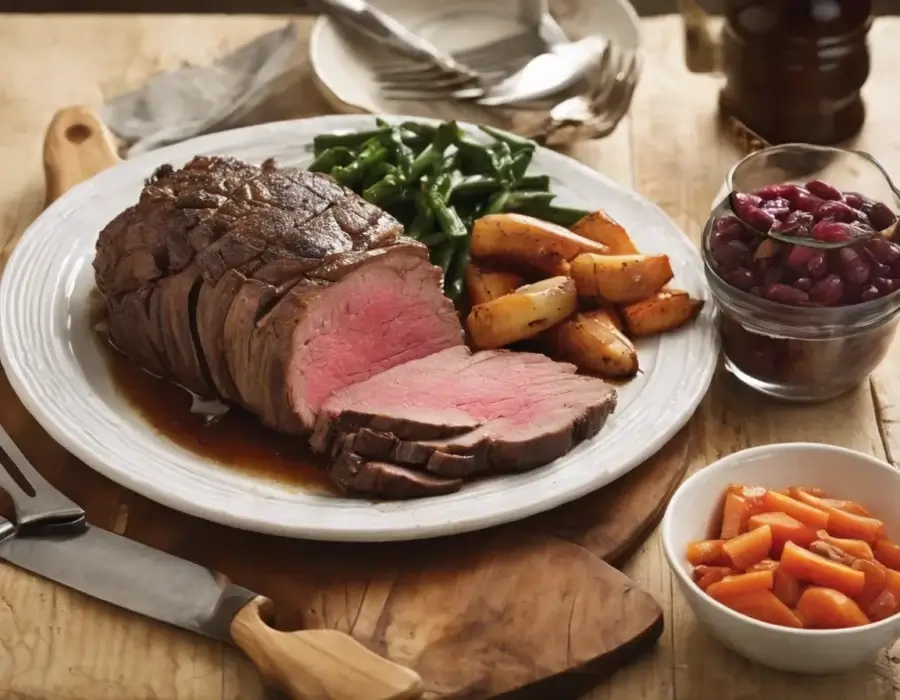Ready to turn your rump roast into a mouth-watering masterpiece? Follow this no-fuss guide for a dinner sure to impress any night of the week.
Rump Roast 101

Ever wondered how to cook a rump roast so it’s tender and juicy? This cut, hailing from the back end of the cow, is lean and flavor-packed.
It’s a prime candidate for slow-cooked, savory meals. Braising can also transform this cut into a succulent masterpiece. It’s all about low and slow heat.
Rump roasts are also versatile. You can aim for a comforting pot roast or thin sandwich slices. Either way, you’re opening up a world of hearty meal options.
Seasoning Magic

The real magic lies in the seasoning. A perfect blend of salt and pepper is your foundation, but the true enchantment comes from those secret herbs.
Each one adds a layer of flavor, turning your roast from ordinary to extraordinary. Thyme, rosemary, and garlic can elevate your rump roast into a culinary masterpiece.
Cooking a rump roast is an art form where seasoning plays the lead role. Balancing your spices is key. Too much is overwhelming, and too little is bland.
Searing Secrets

Ever wondered why chefs insist on searing a rump roast before it hits the oven? It’s not just for show! Searing creates a delectable crust.
This locks in those juicy flavors, making every bite a savory delight. A hot pan and a couple of minutes are your secret weapons.
That golden-brown crust comes from the Maillard reaction. This culinary phenomenon transforms proteins and sugars into a feast for the senses, ensuring your roast is spectacular.
Roast to Perfection

Start by preheating your oven to the magic number: 325°F. This slow and steady temperature is your golden ticket to a roast that’s brimming with flavor.
For a medium-rare wonder, aim for about 20-25 minutes per pound. Patience is a virtue, especially when it leads to that perfect pink center and a mouthwatering crust.
Once out of the oven, tent your roast with foil and give it a good 15-20 minutes. This allows the juices to redistribute, ensuring every slice is succulent.
Veggie Companion

No rump roast dinner is truly complete without roasted veggies. Root vegetables like carrots, potatoes, and parsnips marry perfectly with the rich flavors of your roast.
Wondering how to elevate those veggies? A sprinkle of rosemary, thyme, or garlic powder can go a long way. These seasonings complement the beef and smell delicious.
Let’s not forget about onions and bell peppers. They become sweet and tender in the roast’s ambient heat, acting as flavor enhancers that soak up the roast’s essence.
Basting Basics

Ever wondered how to cook a rump roast that’s juicy and full of flavor? The secret ingredient isn’t a spice, but a technique: basting.
Spooning those delicious juices over your roast keeps it from drying out. It infuses your rump roast with layers of flavor every time you lovingly douse it.
Each baste is an opportunity to enhance the meat’s taste, making it a crucial step in the roasting process. This process creates an irresistible caramelized crust.
Check the Temp

Knowing exactly when to check the internal temperature can make or break your meal. So, grab that meat thermometer and let’s dive into the details.
Aim for an internal temperature of 145°F for medium rare. Don’t be shy about checking the temp multiple times as you near the end of cooking time.
Insert the thermometer into the thickest part of the roast for the most accurate reading. This simple step is integral to mastering how to cook a rump roast.
Rest and Relax

Letting your meat rest before slicing is like a magic spell for locking in those delectable juices. Your patience will be rewarded with every tender, flavorful bite.
Slicing into your rump roast too soon is a tragedy in the making! All those flavorful juices end up on the cutting board, not in your mouth.
Don’t skip the rest! This simple step transforms your roast from good to great. Trust us — your taste buds will thank you.
Carving Know-How

Ever wondered why some slices of a rump roast are more tender than others? It’s all in the carve! Slicing it right ensures each piece melts like butter.
Did you know the direction you carve your roast can make or break its tenderness? You’ll never want to forget this detail. Always slice against the grain.
So, why is this step necessary? This little trick shortens the muscle fibers, making your rump roast effortlessly tender and much easier to chew.
Sauce it Up

When learning how to cook a rump roast, pay attention to the sauce that accompanies it. A good gravy can transform a simple roast into a masterpiece.
Imagine the rich flavors of your rump roast being enhanced by a velvety gravy. This is the essence of your dish, making every bite unforgettable.
It’s about enhancing, not overshadowing, the meat’s natural taste. With just a few ingredients (stock, drippings, and flour), you can create a sauce that elevates your roast.
Side Dish Stars

Perfectly cooked vegetables can elevate your roast from good to unforgettable. Imagine combining the rich, tender roast with a side of caramelized carrots or creamy mashed potatoes.
No rump roast dinner is complete without considering texture. Crispy roasted potatoes or a vibrant, crunchy green bean almondine can add that necessary texture contrast.
A silky, rich gravy made from the roast’s drippings can transform your side dishes, too. It’s these thoughtful touches that turn a meal into a feast.
Wine Pairings

When you’re mastering how to cook a rump roast, the perfect wine pairing can elevate your meal. A full-bodied red like Cabernet Sauvignon complements the roast’s savoriness.
If you want something lighter, a smooth Merlot pairs wonderfully with rump roasts. Its subtle hints of dark fruit and spice can enhance the meat’s natural flavors.
Want a flavor adventure? A Syrah with its peppery notes and vibrant acidity brings out the best in a rump roast’s hearty flavors, giving your meal an edge.
Leftover Magic

Nobody wants to be stuck with mundane leftovers. You can turn a succulent roast into tacos for Tuesday’s dinner or a savory stew that warms the soul.
With a rump roast, the possibilities are endless. You can also shred it up for a hearty sandwich filling, or slice it thin for a protein-packed salad topping.
A rump roast can become the star ingredient in a variety of dishes. From stir-fries to pies, it’s your ticket to a week filled with delicious, hassle-free meals.
Storage Tips

Storing rump roast properly is key. Wrap the roast tightly in aluminum foil or plastic wrap, and pop it in the coldest part of your fridge.
Thinking about freezing? You’re on the right track. If you’ve got more roast than you can handle right now, freezing is a fantastic option.
Make sure to wrap it tightly to prevent freezer burn. This method can keep your rump roast tasting great for months, perfect for a surprise dinner plan!
Health Considerations

Okay, so we’ve thoroughly established how delicious rump roasts are. But are they as healthy as they are flavorful? Well, if you want protein, then yes.
Rump roasts are super high in protein. They’re also a lean cut, making these roasts a lot less fatty than other cuts of beef.
They’re not super healthy, but they’re better than the alternatives. Want steak without piling on the fat? This dish is for you (per Wagyuman).
Common Mistakes

The biggest mistake when learning how to cook a rump roast is getting the timing wrong. Cook for too long, and your meat will end up flavorless.
Speaking of flavorlessness, you need to go crazy with seasoning. We’ll get into marinades in a bit, but right now, just know that you’ll need lots of it.
You’ll be cooking a whole roast, after all. There’s no such thing as too much sauce. Season it prior to cooking, and you’re on your way to perfect meat.
Marinades

Now that you know that you’ll need a lot of it, what kind of marinades will work? A key ingredient in every good marinade is soy sauce.
Mix it together with brown sugar, water, salt, pepper, and worcestershire sauce for the full affect. Feel free to add (or take away) more ingredients.
If you go down this route, then we recommend that you skip the gravy. Its flavors might clash with the marinade and overwhelm the meat.
Cookware Choices

There’s multiple routes you can go down. The first is the oven. Lots of people sear their meat in the oven before letting it continue to cook.
If your favorite thing about rump roast is the tenderness, then you can maximize this in a slow cooker. You can also swap that for a Dutch oven.
If you want to be different, then you can cook rump roast on your stovetop. This method calls for a large skillet filled with broth.
Final Thoughts

Armed with the secrets on how to cook a rump roast, you’re on the brink of culinary excellence. Get ready to embark on this journey of flavors.
Remember, the key to a succulent rump roast mostly lies in patience. Let the aromas fill your kitchen, building anticipation for that first delicious bite.
It’s about enjoying the process as much as the result. Each slice is a testament to your newfound skills in mastering how to cook a rump roast.

